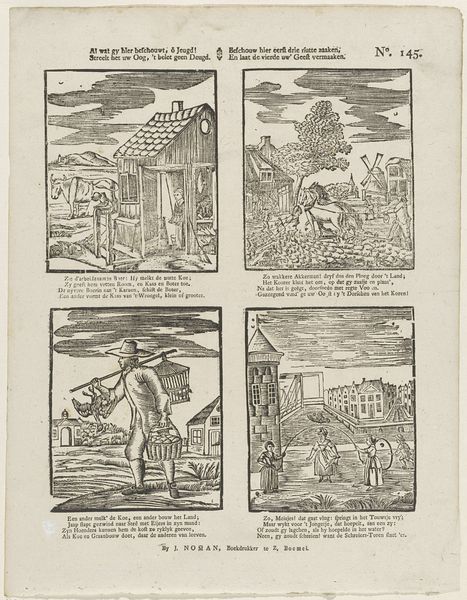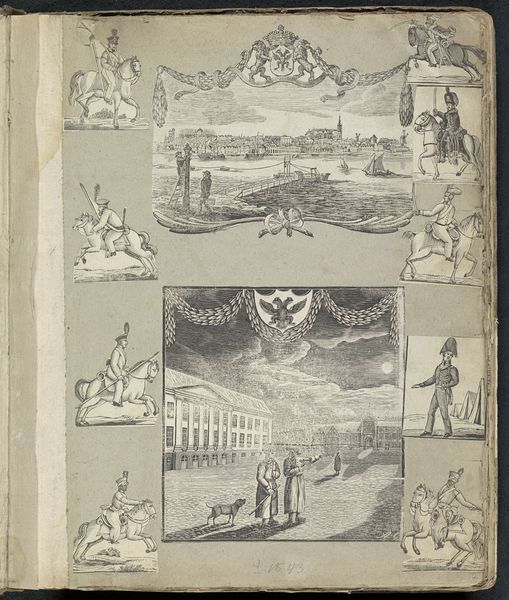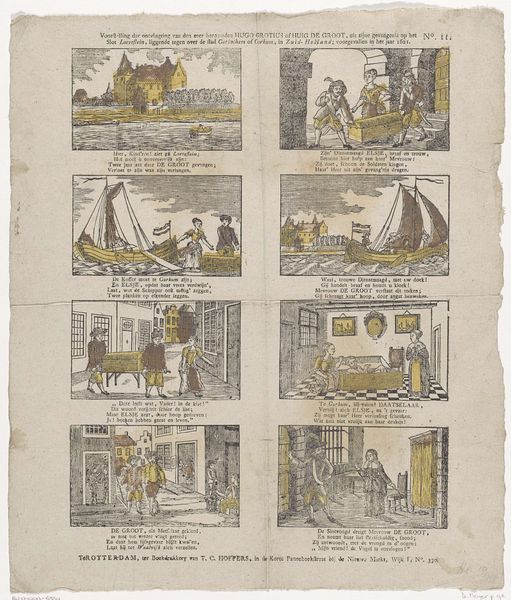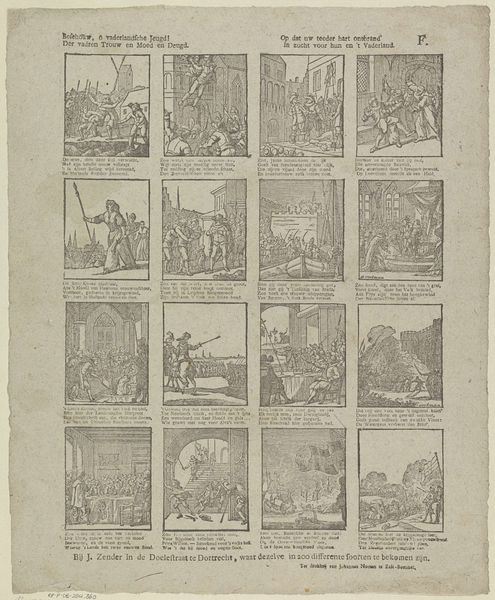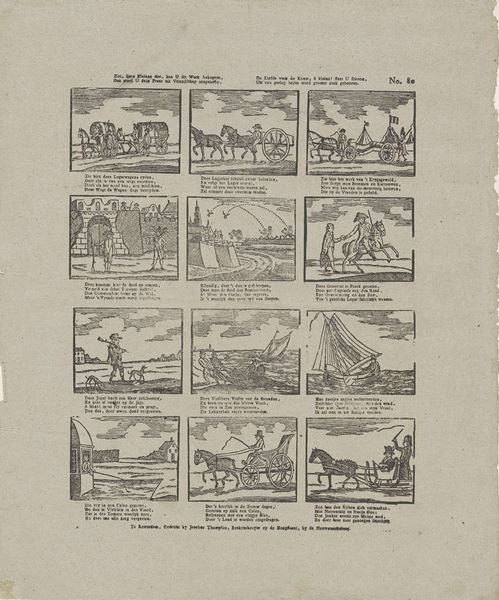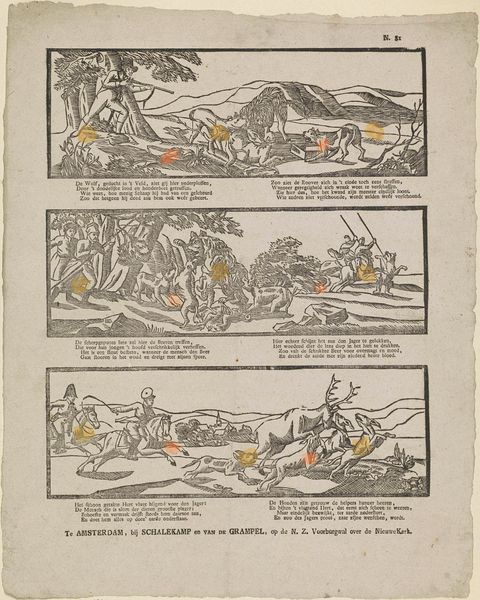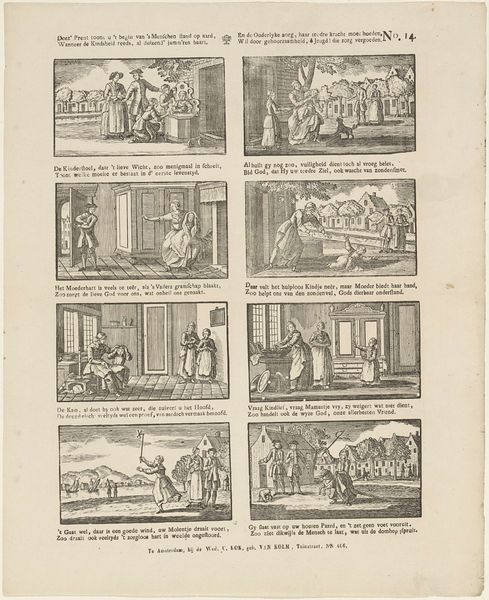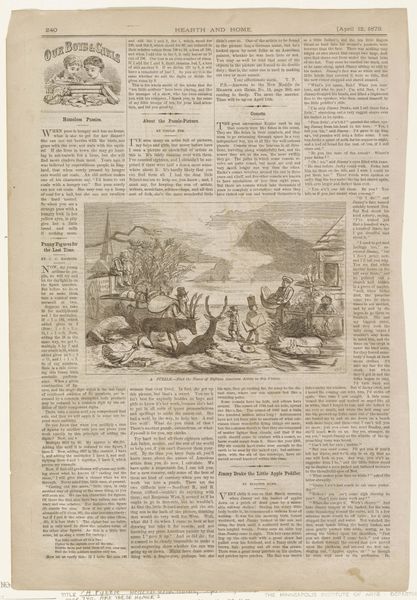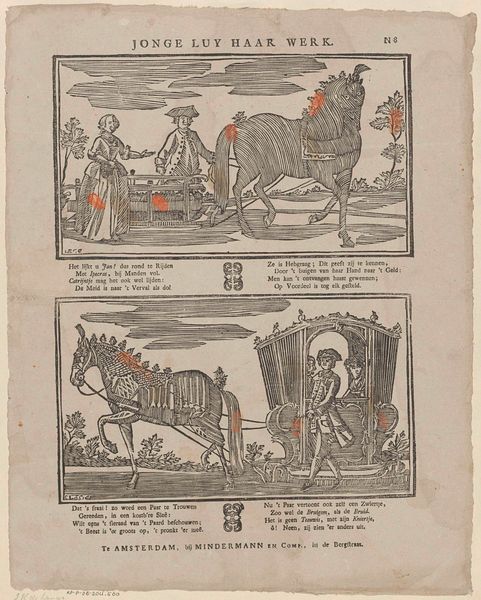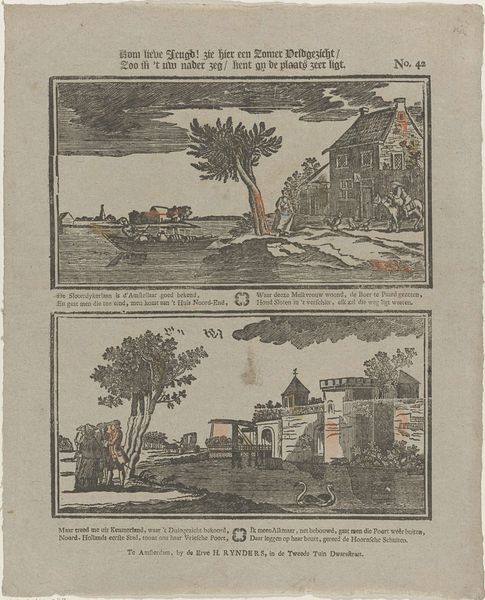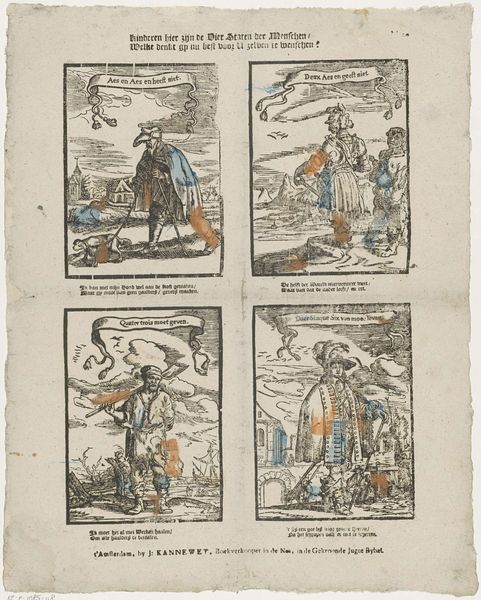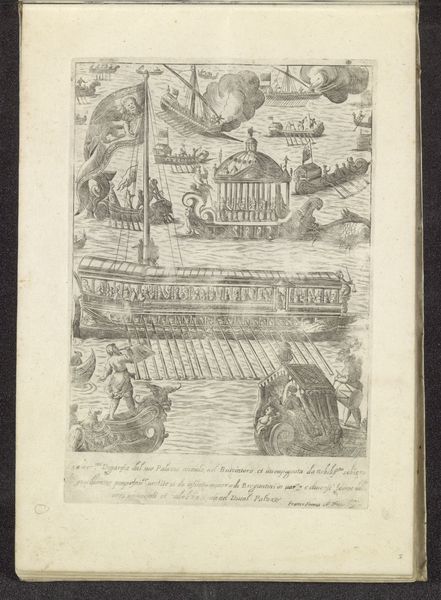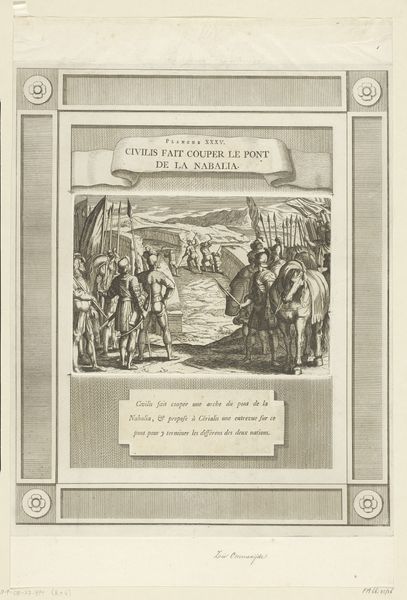
print, engraving
#
narrative-art
# print
#
landscape
#
history-painting
#
engraving
Dimensions: height 407 mm, width 330 mm
Copyright: Rijks Museum: Open Domain
Editor: This engraving by Johannes Donker, titled "Two Images of the Flood in 1809," presents a striking contrast. The upper scene depicts a stormy landscape, and the lower, the interior of a flooded home. I’m immediately struck by how different the visual strategies are for depicting public and private spaces of disaster. What was the public role of images like this during that time? Curator: These prints served several critical public functions in early 19th-century Netherlands. The stark contrast you noticed isn’t accidental. The landscape view emphasizes the scale of the disaster, highlighting the vulnerability of the land and the collective experience. The interior scene brings it down to a personal level: what the loss meant to individual families. Consider who the intended audience was. Editor: It seems designed for a broad audience, perhaps to elicit empathy and support. How would this kind of imagery circulate in society at the time? Curator: Exactly. Prints like these were often sold as news items, as visual reports of significant events. Remember, this predates photography; print was a primary means of disseminating information. They were frequently displayed in public spaces or collected as records. They reinforce existing ideas and expectations of societal hierarchy through gendered representation, namely how the 'Man vlecht saadloos ub her bed'. But who has access to that public? And who gets to make their stories told? Editor: It’s fascinating how such a seemingly simple image reveals such complex socio-political dynamics. Seeing them together adds so much to what each picture means individually. Curator: Precisely. It pushes us to think about how art mediates our understanding of disasters and its ability to mobilize communities through public engagement and visual representation of political issues. The impact of social institutions that determine visibility should be a topic to further consider.
Comments
No comments
Be the first to comment and join the conversation on the ultimate creative platform.
